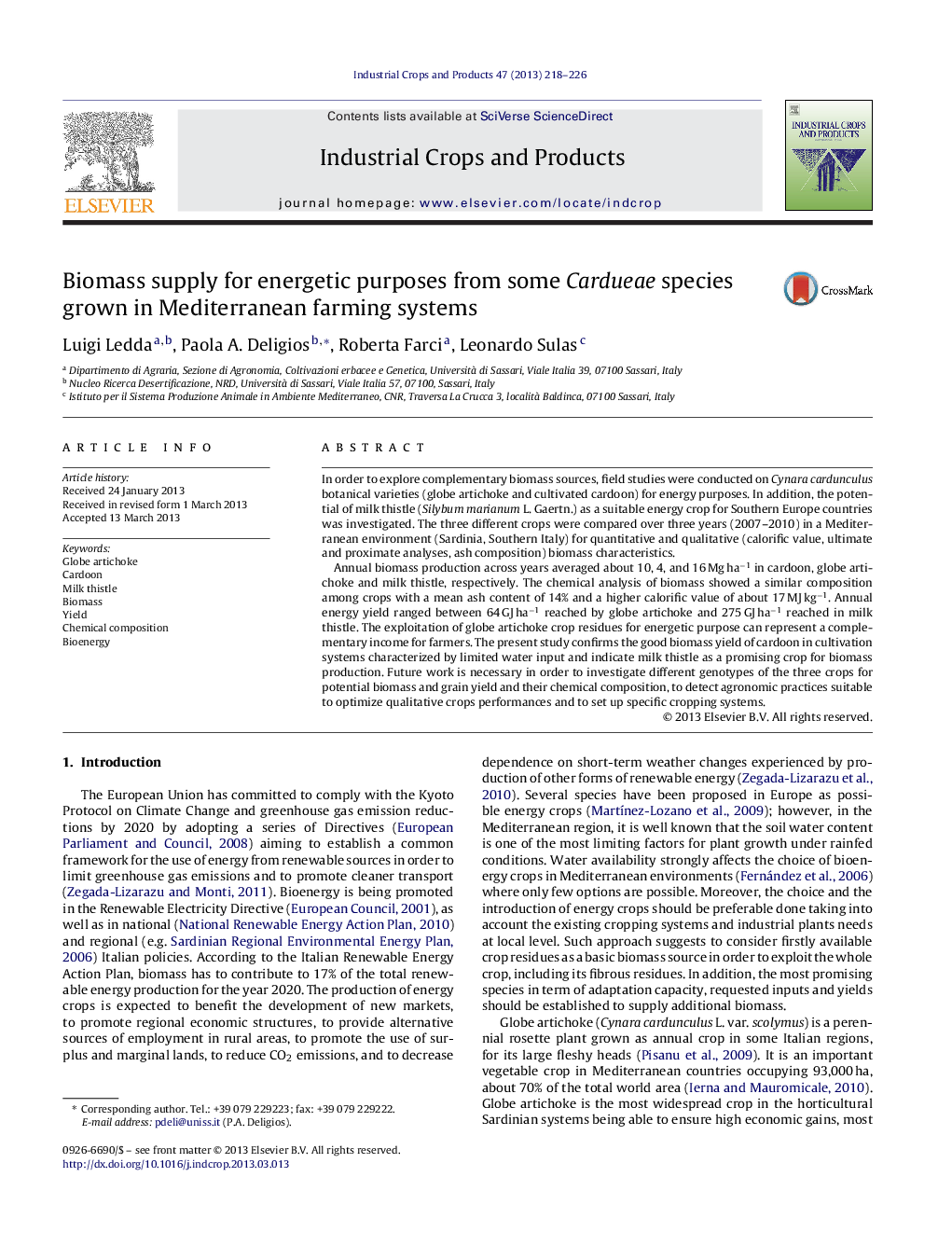| Article ID | Journal | Published Year | Pages | File Type |
|---|---|---|---|---|
| 4513590 | Industrial Crops and Products | 2013 | 9 Pages |
•We compared three Compositae species for bioenergy production in Sardinia (Italy).•Biomass yield and its quality was investigated in globe artichoke residues, cardoon and milk thistle.•Cardoon confirmed its attitude for biomass production in marginal land.•Milk thistle proved to be a promising species for bioenergy.•The exploitation of globe artichoke crop residues could represent a complementary income for farmers.
In order to explore complementary biomass sources, field studies were conducted on Cynara cardunculus botanical varieties (globe artichoke and cultivated cardoon) for energy purposes. In addition, the potential of milk thistle (Silybum marianum L. Gaertn.) as a suitable energy crop for Southern Europe countries was investigated. The three different crops were compared over three years (2007–2010) in a Mediterranean environment (Sardinia, Southern Italy) for quantitative and qualitative (calorific value, ultimate and proximate analyses, ash composition) biomass characteristics.Annual biomass production across years averaged about 10, 4, and 16 Mg ha−1 in cardoon, globe artichoke and milk thistle, respectively. The chemical analysis of biomass showed a similar composition among crops with a mean ash content of 14% and a higher calorific value of about 17 MJ kg−1. Annual energy yield ranged between 64 GJ ha−1 reached by globe artichoke and 275 GJ ha−1 reached in milk thistle. The exploitation of globe artichoke crop residues for energetic purpose can represent a complementary income for farmers. The present study confirms the good biomass yield of cardoon in cultivation systems characterized by limited water input and indicate milk thistle as a promising crop for biomass production. Future work is necessary in order to investigate different genotypes of the three crops for potential biomass and grain yield and their chemical composition, to detect agronomic practices suitable to optimize qualitative crops performances and to set up specific cropping systems.
